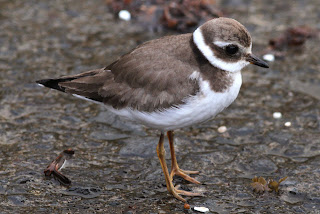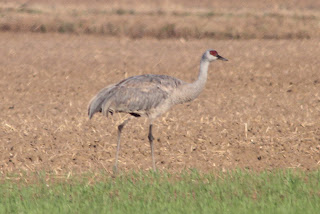 |
| Elmley action in the October heat |
Well, with the record October temperature recorded today in Gravesend at 29.9°C you can’t argue with the title. And a Siberian Blue Robin on Foula would have hotted up the birding action had it not been unfortunately dead. However, birding in this heat felt more like a mid-July stroll. I didn’t set out until gone midday as I wanted to complete my WP report for Birdwatch before I did so. I also got sidetracked, getting mildly riled by the outrageous comments a few nobs had posted on that forum about the Weirwood Long-toed Stint.
Anyway, I decided to head out to Elmley RSPB for the afternoon. Buff-breasted Sandpipers are one of my favourite species, and despite having seen 11 of them in Ireland this autumn, I’d not seen one particularly well given the usual form of this species. This did not change by the way, as today’s bird was quite distant in the haze from the car park. It kept close to the Lapwing flock, flying around at times, and seemed to quite enjoy crouching down adjacent to cow pats. Something I probably wouldn’t have enjoyed doing.
I met Paul Hackett on site, and we then spent an enjoyable couple of hours walking down to the Counterwall Hide. We chatted about old times, from back in the day when we both lived in Cheshire and did a fair number of trips together. The birding was steady, with much of the scrapes dried out. However, my visit coincided with high tide and there were 3 juvenile Little Stints and 4 Curlew Sandpipers (including a moulting adult) present in amongst Dunlin and Ringed Plovers. A Peregrine and Merlin buzzed over, disturbing the waders and Starlings. Loads of Wigeon were on the river on the return walk and Marsh Harrier and Buzzard were picked up on the marsh. I had a brief look for the Buff-breasted Sandpiper on the way back, but it hadn’t been seen for an hour and a bit, so I departed...
The day was rounded off with a stop at Cross Ness for the last hour of light. The Garganey I found last Sunday was still with Teal just east of the golf centre in the lovely, warm evening light. Not much else doing though, with just a single Common Tern at the outfall.
















































